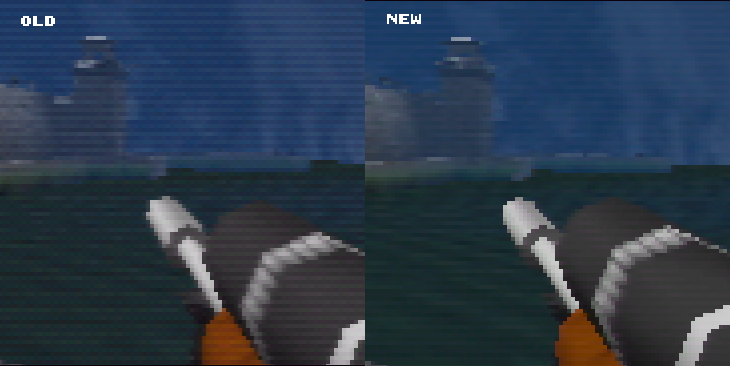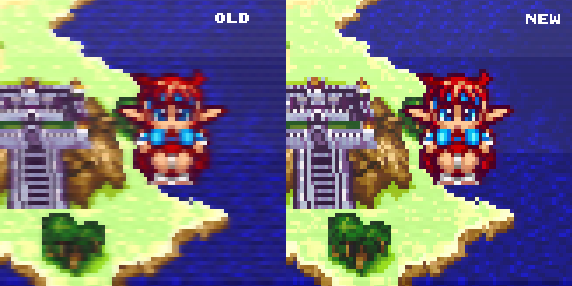As far as postprocessing shaders go, this is as good as it gets for 3dfx faking i’m afraid. N64 would have to be forked off to a different shader and that’s not something i’m willing to pursue at this time. Two passes of advanced-aa.cg and a mess of NTSC+CRT shaders should fit that fancy.
To go further than this would mean moving the dither stage to textures, outside the postprocess scope
3dfx didn’t do any post-process dithering, that was done on the texture unit. Also it had a different blockier dithering table for blended textures, and with enough overdraw, the dithering will really stand out. This kind of approach is impossible to take on a post filter alone, mupen64 would have to be modified to replicate that…or tyrquake in GL for that authentic 1997 3dfx look… or maybe some DC emulation core for some wackyheaded WhatIfItShippedWithAVoodoo2 reason
however where to start on doing that i’m not even sure, I would want to prototype it in GLSL on this OA engine’s shader system first, which only has working screen postprocess atm. Maybe someday that’ll become a core itself. I already ripped it apart enough to get it to render in 640x480/320x240 scaled upwards with aspect. and even a cvar to slow it to p2-300 approximate speeds






